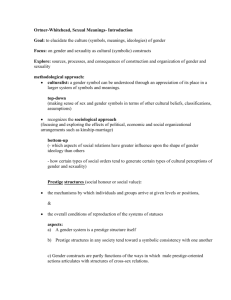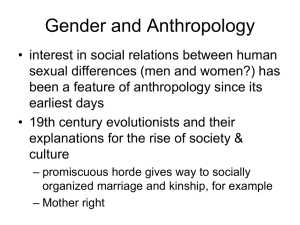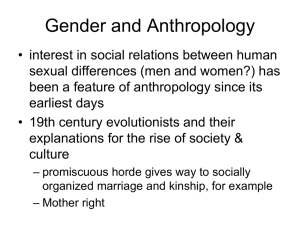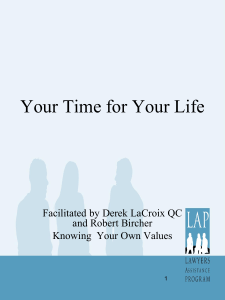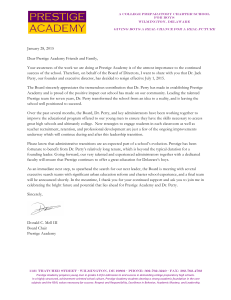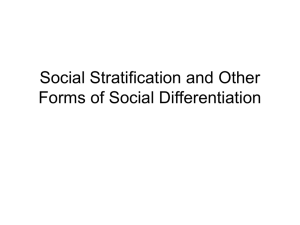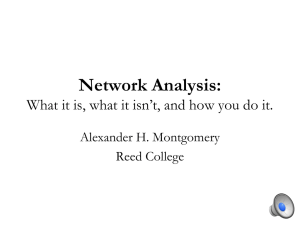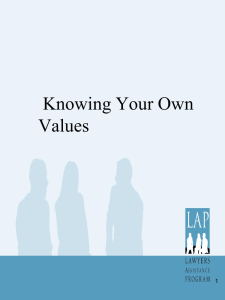Pine, Francis, Gender
advertisement
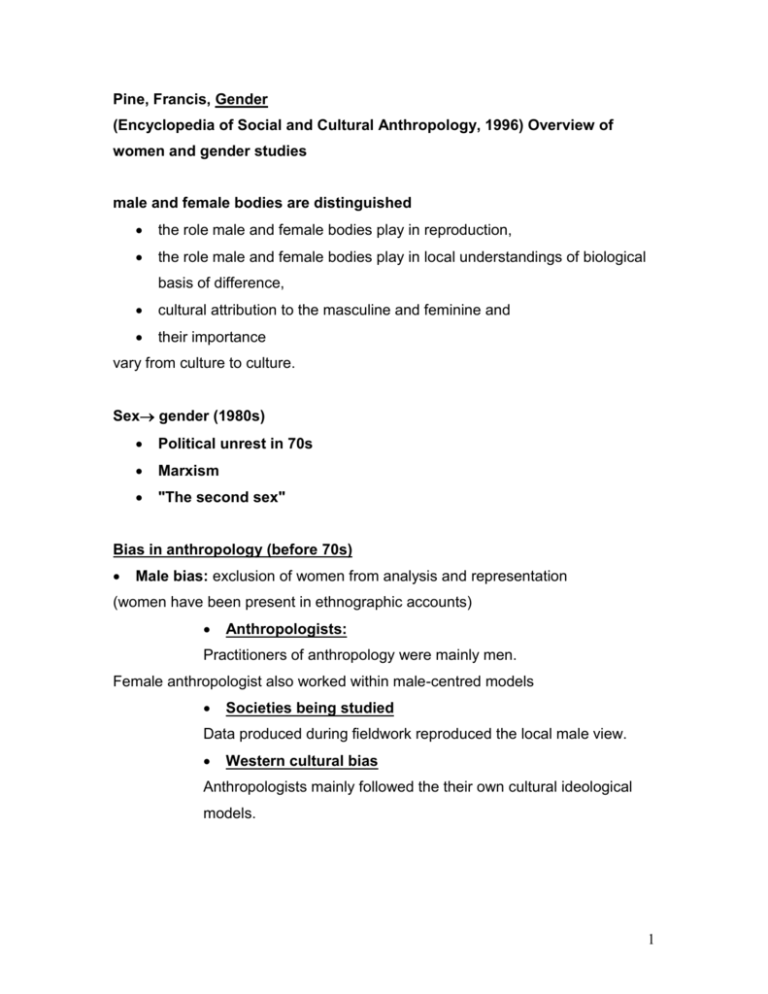
Pine, Francis, Gender (Encyclopedia of Social and Cultural Anthropology, 1996) Overview of women and gender studies male and female bodies are distinguished the role male and female bodies play in reproduction, the role male and female bodies play in local understandings of biological basis of difference, cultural attribution to the masculine and feminine and their importance vary from culture to culture. Sex gender (1980s) Political unrest in 70s Marxism "The second sex" Bias in anthropology (before 70s) Male bias: exclusion of women from analysis and representation (women have been present in ethnographic accounts) Anthropologists: Practitioners of anthropology were mainly men. Female anthropologist also worked within male-centred models Societies being studied Data produced during fieldwork reproduced the local male view. Western cultural bias Anthropologists mainly followed the their own cultural ideological models. 1 Two basic assumptions: 1. historically specific complex set of relations/subordination of women is not universal e.g. Karen Sacks (now Brodkin) Eleanor Leacock Louise Lamphere 2. universal subordination of women or sexual asymmetry cultural analysis and symbolism, historical materialism major dichotomies: (definition?) public/domestic nature/culture production/reproduction e.g. Rosaldo, Ortner, Ardener Rosaldo (Women, Culture and Society, 1974) Domestic: “those minimal institutions and modes of activity that are organized immediately around one or more mothers and their children” (p.23) Public: “activities, institutions, and forms of association that link, rank, organize, or subsume particular mother-child groups” (p.23). Rosaldo's main arguments: universal gender asymmetries are to be found in the universal domestic/public opposition. women’s lack of value is related to their confinement in the domestic sphere (they gain power when they enter the men’s world or by creating their own social universe). the most egalitarian societies are those in which men value and participate in domestic life. 2 Ortner argues against biological determinism (biological differences between men and women take on significance only within culturally defined values systems) Women are second-class(devalued) pan-culturally The distinction between nature and culture is universal. The opposition between nature and culture and its association with gender can be observed in every society. 1980s rejection of universals rejection of dichotomies universal female subordination/male dominance recognition of Western bias /historical and culturally specific dichotomies recognition of presence of symbolical representations of both male and females in various cultural categories e.g. Olivia Harris/Laymi -wild/domesticated not all symbolic systems have hierarchical orders Prestige systems (Ortner-Whitehead) Sexual Meanings- Introduction integration of kinship systems men-women with similar status Goal: to elucidate the culture (symbols, meanings, ideologies) of gender Focus: on gender and sexuality as cultural (symbolic) constructs Explore: sources, processes, and consequences of construction and organization of gender and sexuality 3 methodological approach: culturalist: a gender symbol can be understood through an appreciation of its place in a larger system of symbols and meanings. top-down (making sense of sex and gender symbols in terms of other cultural beliefs, classifications, assumptions) recognizes the sociological approach (focusing and exploring the effects of political, economic and social organizational arrangements such as kinship-marriage) bottom-up (- which aspects of social relations have greater influence upon the shape of gender ideology than others - how certain types of social orders tend to generate certain types of cultural perceptions of gender and sexuality) Prestige structures (social honour or social value): the mechanisms by which individuals and groups arrive at given levels or positions, & the overall conditions of reproduction of the systems of statuses aspects: a) A gender system is a prestige structure itself b) Prestige structures in any society tend toward a symbolic consistency with one another 4 c) Gender constructs are partly functions of the ways in which male prestige-oriented actions articulates with structures of cross-sex relations. a) A gender system is a prestige structure itself simple societies → men junior men women more complex societies→ gender formal social organizational principle (boys who are not sporty and masculine → like a girl) b) Prestige structures in any society tend toward a symbolic consistency with one another harmonized with other prestige orders: nature/culture or two more fused (age/gender), caste/class/rank/gender, occupational specialization c) Gender constructs are partly functions of the ways in which male prestigeoriented actions articulates with structures of cross-sex relations. other-than gender-prestige hierarchies are male games men → defined according to their role (warrior, statesmen) simple societies → big man (women wards) more complex societies → statesman, Brahmin, elder women → defined in relation to men (wives, mothers) not as a result of domestic/public domains but sphere of prestige relations domestic = female (childtenders, hostesses) domestic ≠ female (mothers, wives) 5
